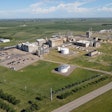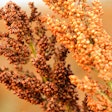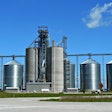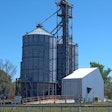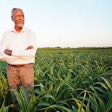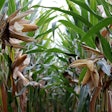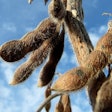Fusarium Head Blight (FHB), also called ‘scab’, is a fungal disease that infects wheat and other grains such as rye and barley. The direct and secondary effects of this disease cause billions of dollars in losses world-wide. In addition to reducing wheat yields, the fungus produces a toxin, deoxynivalenol (DON), which makes infected grain unsafe for food or feed purposes. One of the most effective strategies for managing this disease is the use of less susceptible or resistant wheat cultivars. Developing these varieties has been hampered by the lack of a rapid, non-destructive, and objective method for identifying the fungi and toxin on kernels.
We recently developed a method, which was partially funded by the U.S. Wheat and Barley Scab Initiative, to estimate the percentage of Fusarium-damaged kernels (FDK %) in wheat grain samples using our automated Single Kernel Near-Infrared (SKNIR) System. Using this technique, it is possible to objectively, rapidly and consistently measure FDK % in wheat samples. The SKNIR system will allow wheat breeders to evaluate harvest samples for Fusarium infection rapidly, and non-destructively, speeding up the development of resistant varieties.
我们也开发了SKNIR estimat技术e the DON content in single wheat kernels and bulk toxin levels in small grain samples. Wheat breeders use the FDK % and bulk DON level of grain samples as important parameters in the evaluation of wheat varieties for FHB disease resistance. Determining the pattern of DON distribution among kernels of grain may shed light on the spread of the disease. In addition, study of the DON distribution pattern among DON containing kernels may indicate the extent of DON detoxification or resistance to DON accumulation. When wheat varieties are grown and inoculated under controlled conditions, comparison of single kernel DON distribution patterns among kernels of wheat varieties can provide some clues about their intrinsic FHB resistance mechanisms. For example, the single kernel DON distribution among harvested kernels of varieties Everest and Tomahawk (Figure 1) shows that Everest has more resistance to the spread of FHB disease compared to Tomahawk. When single kernel DON distribution among randomly selected DON containing kernels of these two varieties are compared (Figure 2), it seems that variety Tomahawk shows a higher resistance to DON accumulation compared to Everest. Therefore, these nondestructive, rapid techniques can be helpful to wheat breeders for more comprehensive evaluation of wheat germplasm for FHB resistance and hence streamline the FHB resistant variety development process.
This newly developed SKNIR technique will allow wheat breeders to rapidly and objectively assess wheat kernels for FHB damage. Because the method is non-destructive, plant breeders can quickly evaluate samples for FHB damage and still utilize the seed for planting and generation advancement. The technique will also be useful to agronomists and plant pathologists as they evaluate fungicides or other FHB management practices to reduce the impact of this important wheat disease.
Research conducted by Drs. Floyd Dowell and KHS Peiris; collaborators included Y. Dong, W. Berzonsky, P.S. Baenziger, S.N. Wegulo, W.W. Bockus. For more information, contact Floyd Dowell, (785) 776-2753,[email protected]











